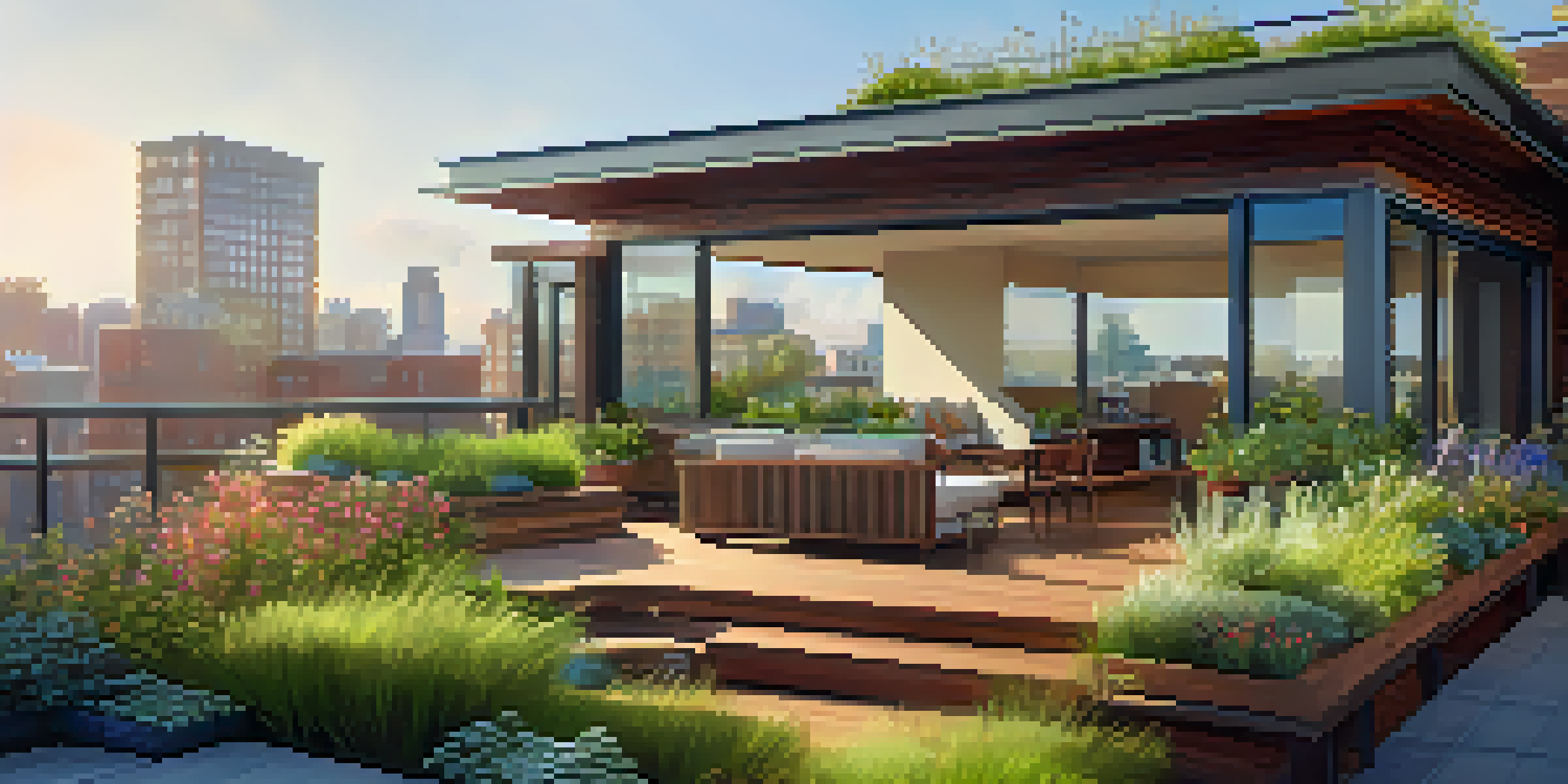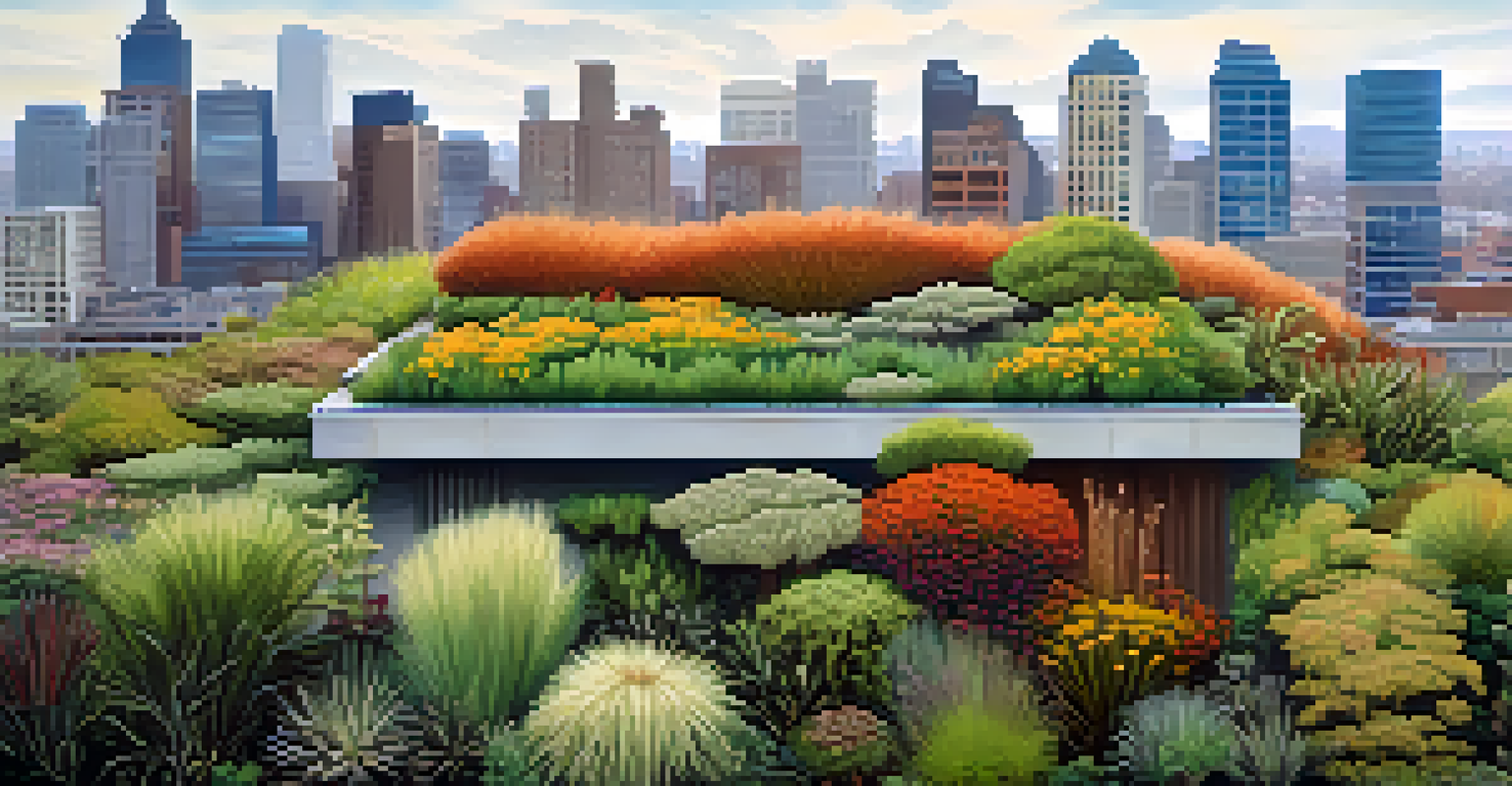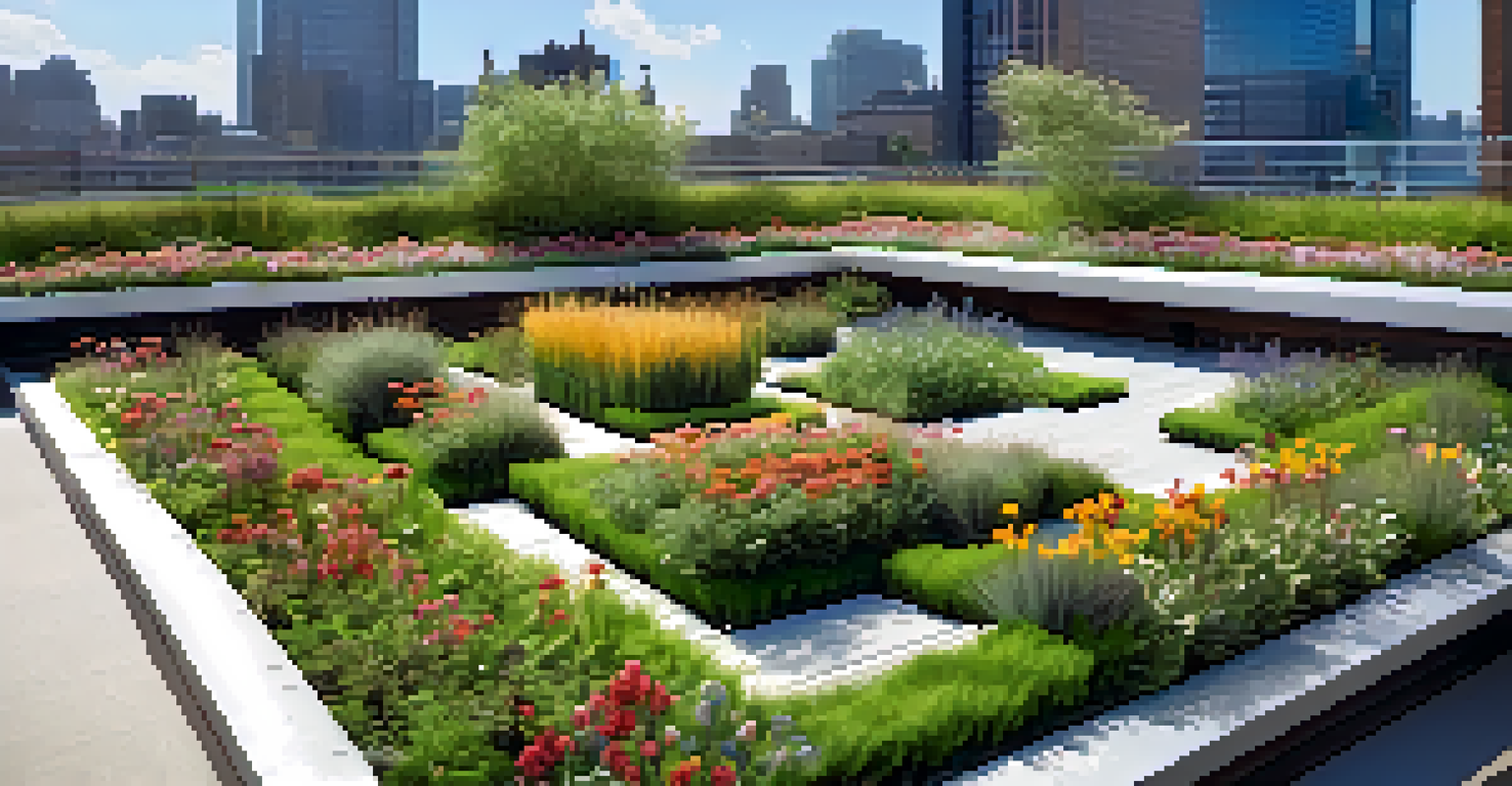Exploring Innovative Green Roof Designs for Homes

The Benefits of Green Roofs for Homeowners
Green roofs are not just a trend; they offer numerous benefits for homeowners. They help insulate your home, reducing energy costs by maintaining cooler temperatures in summer and warmer ones in winter. Additionally, they improve air quality by filtering pollutants and providing a habitat for wildlife, which is especially valuable in urban areas.
Green roofs are a vital part of urban ecology, providing habitat for wildlife and improving air quality.
Imagine stepping onto your roof and finding a lush garden instead of the usual tar or tiles. This transformation can add aesthetic value to your home, making it a green oasis amidst concrete. Plus, the visual appeal can increase property value, making it a smart investment.
Lastly, green roofs help manage stormwater by absorbing rainwater, reducing runoff and the risk of flooding in urban environments. This eco-friendly feature plays a crucial role in sustainable urban development, aligning with the growing movement towards greener living.
Types of Green Roof Designs to Consider
When it comes to green roofs, there are two primary types: extensive and intensive. Extensive green roofs are lightweight, requiring minimal maintenance, and are often covered with sedums and other drought-resistant plants. They're perfect for homeowners who want a green touch without the high upkeep.

On the other hand, intensive green roofs allow for a wider variety of plants, including shrubs and small trees. These roofs require more structural support and maintenance but can create stunning rooftop gardens that serve as additional living spaces for relaxation or entertaining.
Energy Savings with Green Roofs
Green roofs provide insulation, reducing energy costs by maintaining optimal temperatures year-round.
For those who want to go beyond the basics, modular green roof systems are gaining popularity. These pre-planted trays can be easily installed and are customizable, allowing homeowners to design their green roofs according to their preferences and local climate.
Incorporating Native Plants into Your Roof Garden
Using native plants in green roof designs is a fantastic way to promote biodiversity. Native species are adapted to the local climate and soil conditions, making them easier to maintain and more resilient against pests and diseases. Plus, they attract beneficial pollinators like bees and butterflies.
A green roof is a living, breathing entity that can help cool our cities and reduce energy costs.
Imagine your rooftop buzzing with life as bees visit flowering plants, contributing to the ecosystem right from your home. This connection to nature not only enriches your living space but also supports local wildlife populations that may be threatened by urban development.
Moreover, native plants often require less water than non-native species, making them an eco-friendly choice for homeowners looking to minimize their environmental impact. This sustainable approach aligns perfectly with the philosophy of green roof gardening.
Designing Functional Green Roof Spaces
Designing a green roof is about more than just aesthetics; it’s also about functionality. Consider how you want to use the space—whether for relaxation, gardening, or entertaining. Planning your layout with purpose can lead to a more enjoyable and useful rooftop area.
For instance, creating zones for different activities, such as a seating area surrounded by plants or a small vegetable garden, can enhance the overall experience. You might envision hosting friends for a barbecue while surrounded by greenery, making your home feel more inviting.
Enhancing Urban Biodiversity
Incorporating native plants in green roofs promotes biodiversity and supports local wildlife, enriching urban environments.
Additionally, incorporating features like pathways, seating, or even a small water feature can create a harmonious outdoor retreat. Thoughtful design can turn your green roof into a personal oasis, adding value to your home and enriching your lifestyle.
Sustainable Materials for Green Roof Construction
When building a green roof, choosing sustainable materials is crucial to maintaining an eco-friendly approach. Opting for recycled or locally sourced materials can significantly reduce your carbon footprint while supporting local economies. This mindful choice reflects your commitment to sustainable living.
For example, using recycled roofing membranes can help prevent waste while ensuring durability. Additionally, lightweight substrates made from recycled materials can support plant growth without overburdening your home's structure.
Moreover, incorporating permeable paving stones or rainwater harvesting systems can further enhance your green roof's sustainability. These features not only benefit your roof but also contribute positively to the surrounding environment.
Maintaining Your Green Roof: Tips and Tricks
Maintaining a green roof doesn’t have to be daunting if you plan properly. Regular inspections are key to catching any issues early, such as plant health or drainage problems. A simple monthly check can save you time and money in the long run.
Watering is essential, especially during dry spells. However, many green roofs are designed to be drought-resistant, requiring less water than traditional gardens. Using mulch can help retain moisture and reduce the need for frequent watering.
Functional Outdoor Spaces
Thoughtful design of green roofs can create functional outdoor areas for relaxation, gardening, and entertaining.
Lastly, consider seasonal maintenance practices, like pruning plants in the spring or adding compost to nourish your garden. This ongoing care will keep your green roof thriving and looking its best throughout the year.
Real-Life Examples of Stunning Green Roofs
Several homes around the world showcase the beauty and functionality of green roofs, inspiring others to follow suit. For instance, a family in Brooklyn transformed their urban space into a vibrant garden oasis, complete with native plants and a seating area for gatherings, showcasing how green roofs can both beautify and enhance lifestyle.
Another remarkable example is a modern home in Toronto that features an expansive green roof designed for sustainability and relaxation. With a mix of edible plants and ornamental flowers, this rooftop not only provides food but also serves as a peaceful retreat from the city's hustle and bustle.

These real-life examples highlight the endless possibilities of green roof designs. They prove that with creativity and a vision, anyone can turn their rooftop into a thriving ecosystem that benefits both the homeowner and the environment.